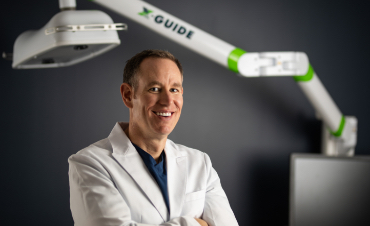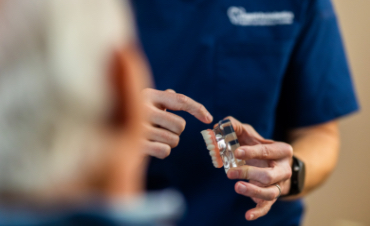Gum disease is a very common problem that affects many patients. In its early stages, gingivitis can be cured and gum health restored. If left untreated, gingivitis can progress to periodontitis, a more serious form of gum disease that can lead to bone deterioration and tooth loss. Periodontitis cannot be cured, but it can be treated and managed to prevent more serious issues.
Signs of Gum Disease
There are several classic signs that may indicate gum disease. Symptoms may vary depending on how advanced the condition has become. When caring for your teeth, be aware of:
- Tenderness or sensitivity
- Bleeding
- Redness or swelling
- Persistent bad breath
- Receding gum line
Treating Gum Disease
There are steps that you can take at home to help prevent and manage gum disease, such as brushing twice a day, flossing, and using mouthwash, but once gum disease has developed, treatment by a dental professional is recommended.
For patients with gingivitis, non-surgical treatment can be beneficial. This includes:
- Deep Cleaning: Your periodontist or dentist will give your teeth a thorough cleaning to remove any plaque from on and around the teeth to keep it from hardening into tartar.
- Scaling: A small tool is used to scrape away plaque and tartar from above and below the gum line. This allows the gums to reattach to the teeth.
- Root Planing: Similar to scaling, plaque and tartar are removed from the tooth root, and it is smoothed out to allow gums to reattach.
More severe cases may require surgical intervention to promote gum health and minimize bacterial growth.
- Flap Surgery: Gum tissue is gently pulled back so that your periodontist can deep clean the tooth root and below the gum line. The gums are then stitched in place to form a tighter seal around the teeth and reduce the space where bacteria can grow. This is also known as pocket reduction surgery.
- Soft Tissue Graft: Tissue from the top of the mouth is used to rebuild the gums in places where they have receded. This can create a stronger barrier against gum disease and provide support for loose teeth.
- Bone Grafting: If gum disease has damaged the bone supporting the tooth root, a bone graft may be necessary to stimulate healthy bone growth and create a strong foundation to hold teeth in place.
Be Proactive About Gum Health
Regular checkups and cleanings can lead to early detection and treatment of gum disease, minimizing potential complications. Even if you have advanced gum disease, it is important to see a dental professional for treatment so that you can restore your comfort and oral health. The team at Derby City Dental Specialists works with you to treat gum disease no matter its stage and rebuild your confidence in your smile. Schedule your appointment today.




